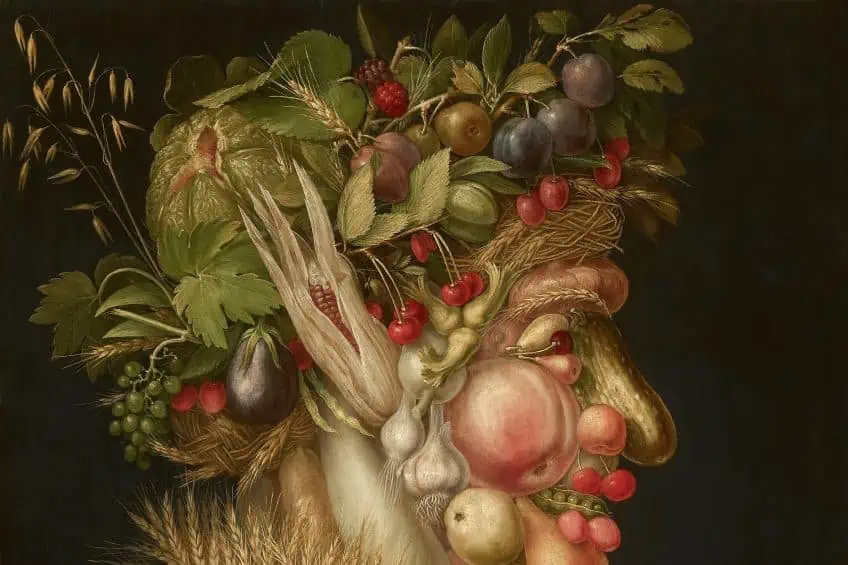Anthropomorphism Art – Exploring Anthropomorphic Art
What is Anthropomorphism art and what is the anthropomorphic definition? Anthropomorphism is the practice of imbuing non-human beings with human feelings, characteristics, or desires. Anthropomorphic art has ancient roots, and most societies have mythological tales depicting anthropomorphized creatures. Anthropomorphism artists have frequently assigned human emotions and behaviors to both domesticated and wild animals, as well as natural objects like trees and the wind.
Understanding Anthropomorphism Art
Examples of zoomorphic or anthropomorphic artworks appeared around 40,000 years ago, at the dawn of human behavioral change, and may constitute the oldest known proof of anthropomorphism art. The Löwenmensch Figure in Germany, a human-shaped figure with the face of a lion, has been proven to be around 32,000 years old. It’s difficult to figure out what these archaic pieces of art symbolize.

The Sorcerer, an intriguing cave artwork from the Trois-Frères Cave in Ariège, France, is a more contemporary example: the figure’s symbolism is unknown, although it is commonly understood as some type of animal master or spirit. There is a degree of anthropomorphic art in both instances. Archaeologists have connected this anthropomorphism art to the rise of more organized hunting activities in the Upper Palaeolithic. They argue that they are the result of a shift in the human mind’s design, and greater flexibility between natural, social, and historical intelligence, where anthropomorphism helped hunters to empathize with game animals and help predict their activities.
Primitive Depictions
Primitive cultural depictions imply that the first attempt at interpretive, if not caricature art, included animals in transformational ways. Although these primitives had no intellectual drive to blend man and animal, animals obviously grew to embody and mimic some human features as the brain acquired its abilities of thinking and imagination. It was simply a step from the artist properly painting nature and animals seen in the outdoors to translating their known characteristics of man. Art has traditionally been used to both represent and illuminate the human condition. As mankind grows more cognizant of his inner self, animals are utilized to convey a variety of traits, from religious to emotional.
Anthropomorphism is almost as ancient as art itself and has been utilized by many ancient cultures through the centuries.
Early Egyptian slaves poked graphic barbs at their individual masters on scraps of papyrus or chunks of stone, concealing and shielding themselves by replacing similar animal features with human ones. The owner had no idea he was the punchline, but the slaves did. Animals carried the metaphorical weight of human stupidity from then on. Animals have long been excellent metaphoric depictions as critique and commentary since rather than targeting a single figure for mockery, a certain animal bears the weight of all character traits and types.
Anthropomorphic Art in Mythology, Religion, and Politics
Many artworks that were created through the ages featured aspects of anthropomorphism as they were based on mythology and religious texts. Anthropomorphism in these instances featured the image of a divine being or creatures in human form, or the identification of human attributes in these entities, in mythology and religion.
The divine was commonly depicted in ancient mythology as gods with human bodies and traits. They are similar to humans not just in form and personality, but also in many behavioral traits that were utilized to explain natural occurrences, origins, and historical events.
The gods fell in love, had children, waged wars, carried weapons, and traveled in carriages and on horses. They dined on special delicacies and occasionally requested human sacrifices of food, drinks, and holy artifacts. Some anthropomorphic deities embodied human ideals like war, love, beauty, fertility, or the elements. Anthropomorphic deities possessed human characteristics such as beauty, knowledge, and power, as well as human flaws like greed, wrath, jealousy, and unbridled rage. Greek deities such as Apollo and Zeus were frequently represented in human form, displaying both laudable and detestable human characteristics.
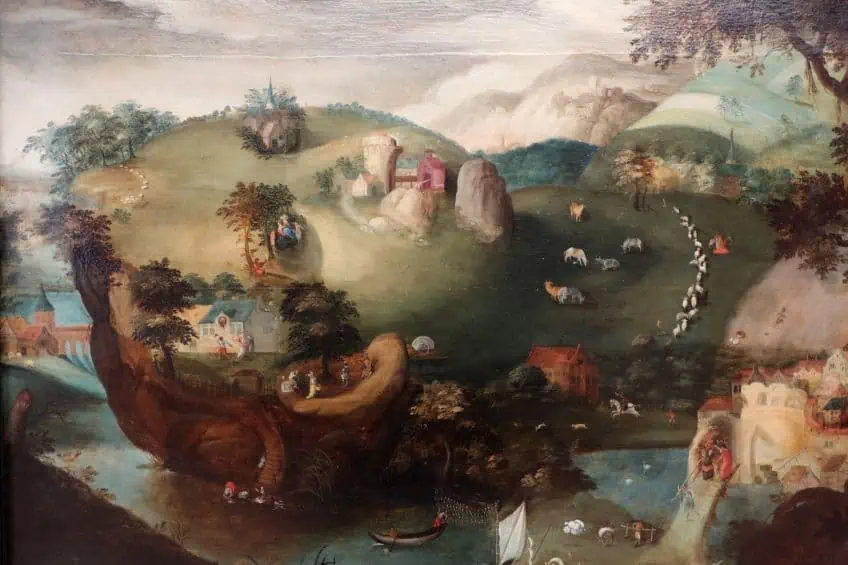
Animals were utilized in ancient Sumer and Egypt to embody, ridicule, and evaluate human conduct. The Egyptian legend of the mouse who functioned as a vizier taught that civilizations require leaders who govern with compassion and without vengeance. Animals served as a moral mirror in antiquity, reflecting both the finest and worst aspects of the human race. This is obvious in Aesop’s animal stories and the Greek comedy playwrights who utilized amphibians and wasps to remark on politicians during the Peloponnesian War.
When J.J. Grandville, the cartoonist, represented members of 19th-century French society – politicians, merchants, and priests – as various species of fowl, it was usually because the actual people he was mocking looked and acted like the animal depicted. But when Ed Sorel packed a New York City subway car with a circus of kinds, it was because it is easy to psychologically transform everyone on the morning journey into animals.
There are two or more of each animal variety on each particular train, just as there were on Noah’s historic ark.
Why Animals Are Depicted with Human Characteristics
Anthropomorphism was utilized at some point in history for the mere fun of imbuing animals with human features – and vice versa. Few objects elicit such a visceral reaction as animals clothed in human attire. The absurdity of a beast acting sophisticated rarely fails to make people laugh. Renowned cartoonist Ronald Searle’s lion king is an evocative depiction of how the king of creatures could appear if he were given the royal human tropes. How did the lion grow to be so majestic? Who conferred the king’s crown on it?
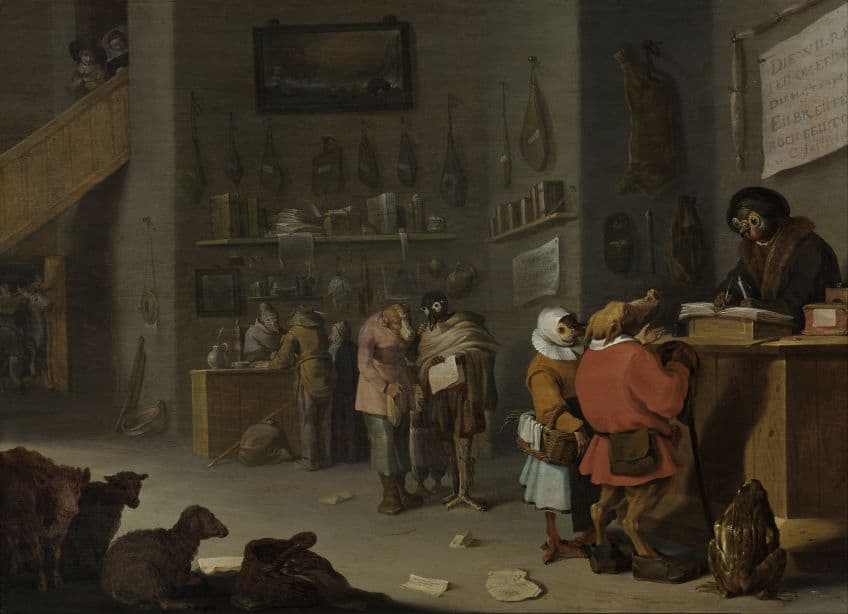
Over the years, fables, myths, and other imaginative impulses have attributed certain attributes to creatures, which have then gained validity, such as the lion’s regal nature, the owl’s wisdom (which represents learning), or the eagle’s grandeur (which exudes power). Often, the illustrator deviates from common preconceptions. It’s sometimes enough to make the creatures fit into a particular metaphor – the loyal dog, the monarchical goose, the cunning fox. Animals have been given significance by the culture at times, although most of the time this is done by the artist.
Notable Anthropomorphism Artists
Many painters throughout history have employed an anthropomorphism art style, in which the artist lends human features to inanimate objects. For example, the legendary artist Salvador Dalí created an anthropomorphic tower, cabinet, and bread – they are all unique designs with fascinating backstories.
Of course, he is not the first well-known artist who has made art by imbuing non-living things with human characteristics.
Giuseppe Arcimboldo (1526 – 1593)
| Name | Giuseppe Arcimboldo |
| Nationality | Italian |
| Date of Birth | 5 April 1526 |
| Date of Death | 11 July 1593 |
| Place of Birth | Milan, Italy |
Giuseppe Arcimboldo began his work as a fresco and stained glass designer at the age of 21. Starting in 1556, at the age of 36, he accepted new employment as a royal portraitist to the Holy Roman Emperor. He subsequently worked at the court of Maximilian II in Prague.
Arcimboldo was fond of producing paintings of fruits, vegetables, and other inanimate items that were arranged into identifiable human features in most of his artworks.

Not only that, but he also created human images of the four elements in his paintings. The piece he constructed for Maximilian embodied the four elements of matter: air, fire, earth, and water. Early 20th-century Surrealist painters like Salvador Dalí rediscovered the Anthropomorphism artworks of Arcimboldo, particularly his numerous images and visual puns.
Athanasius Kircher (1602 – 1680)
| Name | Athanasius Kircher |
| Nationality | German |
| Date of Birth | 2 May 1602 |
| Date of Death | 27 November 1680 |
| Place of Birth | Geisa, Germany |
German Jesuit scholar and polymath Athanasius Kircher produced a painting in 1646 that he would publish in his book Ars Magna Lucis et Umbrae. The artwork incorporated a recent trend known as an anthropomorphic landscape. There was no landscape painting prior to the Renaissance, a passionate time of European cultural and creative renewal following the Middle Ages. Landscapes were exclusively used at that time to set the stage for figurative painting. However, the concept began to gradually and steadily alter as trees, seas, and mountains started to take center stage.
Artists began to create artworks of landscapes with human faces hidden inside them.
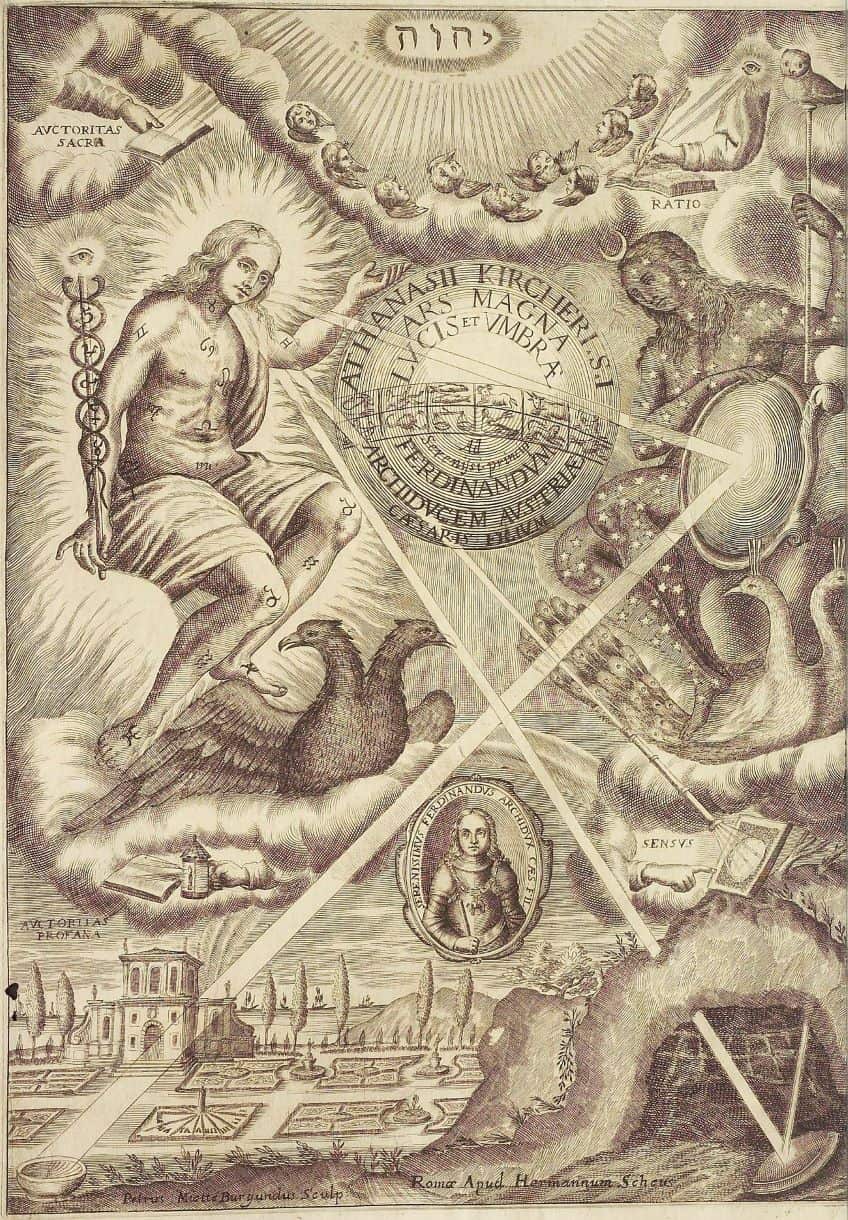
Many Anthropomorphism artists in the 17th century in the Netherlands created landscape paintings with the visage of a big bearded man emerging out of the terrain. Historians credit Athanasius Kircher for starting the trend by producing an anthropomorphic landscape of a bearded man. The artwork was claimed to be inspired by Vitruvius’ narrative of Dinocrates’ attempt to carve an image on Mount Athos. Kircher’s anthropomorphic paintings influenced other famous artists, who created comparable works.
Matthaus Merian Elder, Wenceslas Hollar, and Johann Martin Will are among the painters.
Max Ernst (1891 – 1976)
| Name | Max Ernst |
| Nationality | German |
| Date of Birth | 2 April 1891 |
| Date of Death | 1 April 1976 |
| Place of Birth | Brühl, Germany |
Max Ernst was one of the foremost members of the Surrealism and Dada movements. He did not attend any formal art institutions, unlike several of his peers, such as Dali. Max Ernst, who was born in Germany, was a pioneering proponent of the subconscious in art.
Ernst was a member of the Dada movement in Germany early in his career, and he subsequently became a pioneering member of Surrealism in Paris in the 1920s before emigrating to the United States in the 1940s.
In his works, Ernst frequently changed the human body to create hybrid beings, experimenting with various media such as collage, painting, and sculpture. Anthropomorphic Figure (Plaster Man) (1930) is a fantastic illustration of how Ernst employed texture and surface manipulation to create humanoid figures. In this piece, he modified plaster-covered panels from Luis Bunuel’s surrealist film The Golden Age (1930), in which Ernst portrayed a robber, to produce a painted relief of a robot-like creature.
Salvador Dalí (1904 – 1989)
| Name | Salvador Domingo Felipe Jacinto Dalí Domènech |
| Nationality | Spanish |
| Date of Birth | 11 May 1904 |
| Date of Death | 23 January 1989 |
| Place of Birth | Figueres, Spain |
Salvador Dalí began his official studies in fine arts in Madrid. In the late 1920s, he grew interested in Surrealist art. At the age of 25, he was allowed to enter the Surrealist group, where he eventually became one of the major practitioners. One of Salvador Dalí’s anthropomorphic works is an anthropomorphic echo, which he produced in 1937.
The painting was a replica of Salvador Dalí’s childhood recollection.
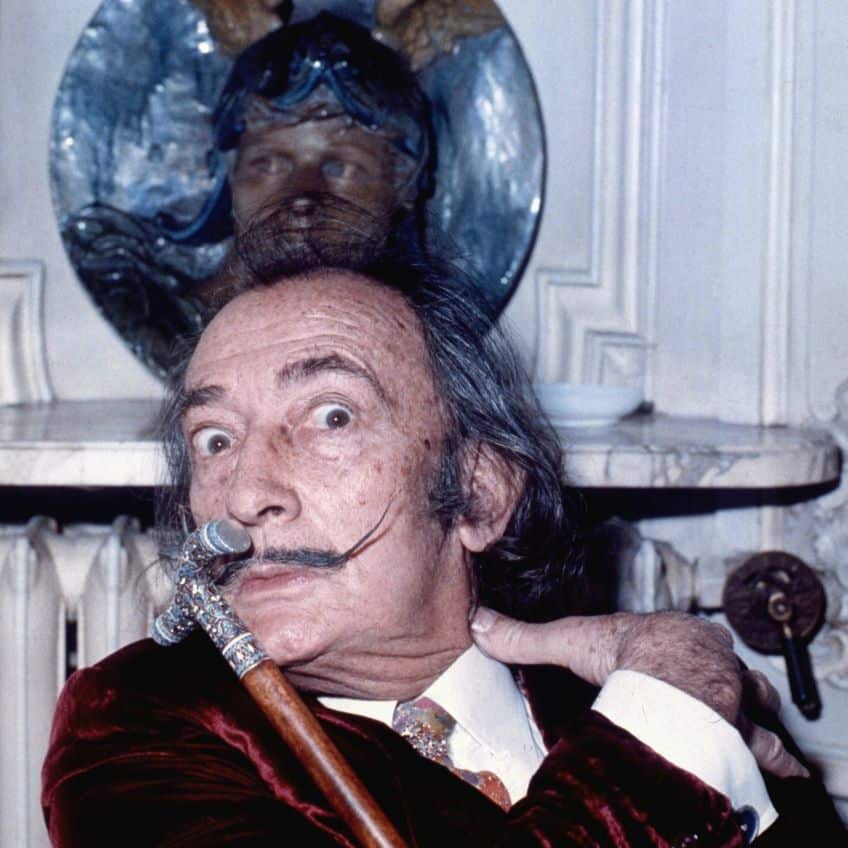
It was inspired by a vista viewed from the window of his Marist Brothers’ School classroom. The picture of a tower is yet another anthropomorphic artwork by Dali. The tower was designed around the time Dali adopted the Surrealist movement. The picture was influenced by another artwork known as the Great Masturbator, which was created around the same time.
Anthropomorphism in art is almost as old as art itself. The oldest cave paintings very often depicted humans with animal-like characteristics and vice versa. This is a trend that has continued for many centuries, leading up to contemporary Anthropomorphism artists. Everything, from dogs to the wind, can be observed in art with certain human-like traits. More modern artists, such as the Surrealists, have used anthropomorphic figures in their works too.
Frequently Asked Questions
In Art, What Is the Anthropomorphic Definition?
Remember when you were young and you would use crayons to make drawings of a landscape with hills and a house, a cow, and a sun? If you ever added a smiling face in the sun, then you too were an Anthropomorphism artist at some point in your life! Basically, any time an artist adds human-like characteristics to an artwork, it then becomes an Anthropomorphism artwork.
Why Do Artists Portray Things with Human Characteristics?
Anthropomorphism in art can be used for a number of reasons. One reason could be to caricature certain public individuals who act in a manner similar to an animal. It could also be a political statement. It could even be purely for the sake of humor. Perhaps we see a bit of humankind in everything around us, or perhaps it is easier for us to identify with animals if we perceive them in the same way we do the humans around us on a daily basis.
Jordan Anthony is a Cape Town-based film photographer, curator, and arts writer. She holds a Bachelor of Art in Fine Arts from the University of the Witwatersrand, Johannesburg, where she explored themes like healing, identity, dreams, and intuitive creation in her Contemporary art practice. Jordan has collaborated with various local art institutions, including the KZNSA Gallery in Durban, the Turbine Art Fair, and the Wits Art Museum. Her photography focuses on abstract color manipulations, portraiture, candid shots, and urban landscapes. She’s intrigued by philosophy, memory, and esotericism, drawing inspiration from Surrealism, Fluxus, and ancient civilizations, as well as childhood influences and found objects. Jordan is working for artfilemagazine since 2022 and writes blog posts about art history and photography.
Learn more about Jordan Anthony and about us.
Cite this Article
Jordan, Anthony, “Anthropomorphism Art – Exploring Anthropomorphic Art.” artfilemagazine – Your Online Art Source. March 2, 2023. URL: https://artfilemagazine.com/anthropomorphism-art/
Anthony, J. (2023, 2 March). Anthropomorphism Art – Exploring Anthropomorphic Art. artfilemagazine – Your Online Art Source. https://artfilemagazine.com/anthropomorphism-art/
Anthony, Jordan. “Anthropomorphism Art – Exploring Anthropomorphic Art.” artfilemagazine – Your Online Art Source, March 2, 2023. https://artfilemagazine.com/anthropomorphism-art/.


